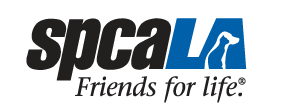Housetraining 101
Housetraining is the act of training your dog so he eliminates in a predesignated area all of the time. Follow the guidelines below to housetrain your dog.
A NOTE ABOUT ACCIDENTS
Accidents are part of the housetraining process. However, if you feel your dog has frequent accidents, or your previously trained dog has begun eliminating in the house, start with a trip to the veterinarian to rule out a medical or physical cause. If there is no medical reason, contact a good trainer and/or behavior specialist. They can help diagnose your dog’s inappropriate elimination problem and determine the appropriate training program to implement. It may be necessary to re-potty train your dog.
Getting Started
TOOLS YOU’LL NEED
- Confined area (crate, exercise pen, puppy gate)
- Elimination area (wee-wee pads, specific outdoor area, etc)
- Treats & KONG® or other fill-able toys
- Odor remover (specially formulated to clean up after accidents)
- Housetraining schedule
- Patience
CONSISTENCY IS KEY
Dogs thrive on routine, especially in the learning phase. The more your dog can anticipate what’s going to happen, the easier training will be. Put your pup on a leash so he doesn’t run off to explore. Tell him “go potty” and then stand quietly until he does his business. It shouldn’t take more than three to four minutes. Don’t play or take a walk until your puppy has eliminated. Calmly praise the pup after he’s finished.
CONFINING YOUR PET
Dogs usually do not mess where they sleep, so confining your pet in the beginning is a must. Crate training is a good start; however, blocking off a small area with a puppy gate or keeping your puppy in an exercise pen will also work. This is only temporary. Your pet should remain in the confined area at all times when you are unable to watch him, with a few toys or a Kong® to keep him engaged. A puppy should not be confined more than two hours at a time and an adult dog no more than four hours. Supervision and avoiding accidents is the best way to facilitate housetraining.
CORRECTING
Correction does NOT mean hitting, yelling or rubbing your dog’s nose in his mess. This absolutely does no good and may only result in your dog being afraid of you. If your pet has an accident, ask yourself: did you stick to the schedule? Is he sick? If your puppy starts to eliminate in the house, interrupt him by saying “no” in a firm voice, but do not yell. Then take your dog outside to finish eliminating and praise him when he finishes in the appropriate area.
PRAISE
Praise your pet every time he eliminates outside. It’s up to you to let him know what pleases you. Reward him with smelly, delicious, high-value treats every time he eliminates.
You’re ready to housetrain!
SET YOUR ROUTINE
Adhering to a strict schedule for feeding, watering, and walking your pet is critical. Keeping a log of when your puppy eats, drinks & eliminates will help you identify your puppy’s habits and help you preempt accidents.
- Feed and water your pet in his confined area.
- Regardless of whether or not your pet is finished, remove food and water after 15 minutes.
- Take your dog to your designated elimination area.
- Praise your dog when he eliminates in the designated area or return him to the confined area if he does not eliminate.
- If your dog didn’t eliminate, try again in 15 to 30 minutes – he doesn’t earn freedom in the house until he’s gone to the bathroom.
- Remember to play! Keep training fun (plus, playtime usually stimulates a dog’s need to relieve himself).
SAMPLE SCHEDULES
Dogs ages 8 weeks to 6 months:
-
- 6:00 AM: Walk
- 6:15 AM: Feed/water
- 9:00 AM: Walk/water
- 9:30 AM: Walk
- 11:30 AM: Walk
- 12:00 PM: Walk/feed/water
- 12:30 PM: Walk
- 3:00 PM: Walk/water
- 4:00 PM: Walk
- 5:00 PM: Feed
- 5:30 PM: Walk
- 6:00 PM: Last water of the day
- 6:30 PM: Walk
- 10:00 PM: Walk
Dogs ages 6 months to 1 year:
- 6:00 AM: Walk/feed/water
- 8:00 AM: Walk
- 10:00 AM: Walk/water
- 2:00 PM: Walk/water
- 6:00 PM: Walk/feed
- 6:00 PM: Last water of the day
- 10:00 PM: Walk
The schedule you make can be adjusted to you and your pet’s timetable. Be aware of your pet’s habits. Is he able to hold longer? Increase the time between walks. If your dog is having accidents, then walk him more often.
Play/training time should be scheduled several times throughout the day. Playing also tends to stimulate puppies, so it may be necessary to walk him again before putting your pet back in the confined area. Making training and playing one in the same is the best way to keep training fun and will teach your puppy that learning and training is enjoyable.
If you adopt an adult dog, it is wise to follow the six-month to one-year schedule until you can determine his individual needs.
Please note, articles in the Animal Resource Library are for reference only, and are not meant to diagnose or treat any medical or behavioral issues your pet may be experiencing.

